Wave Action, canberra art biennial, contour 556. 2022.
-
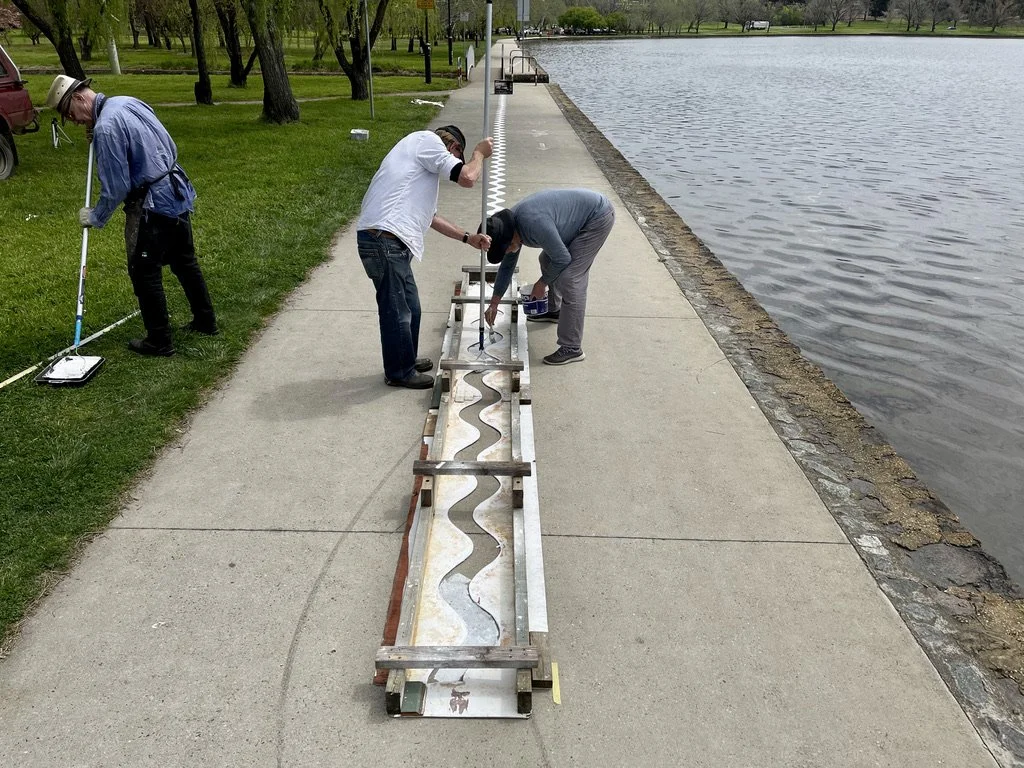
Installation. Photo: Mark Van Veen.
-
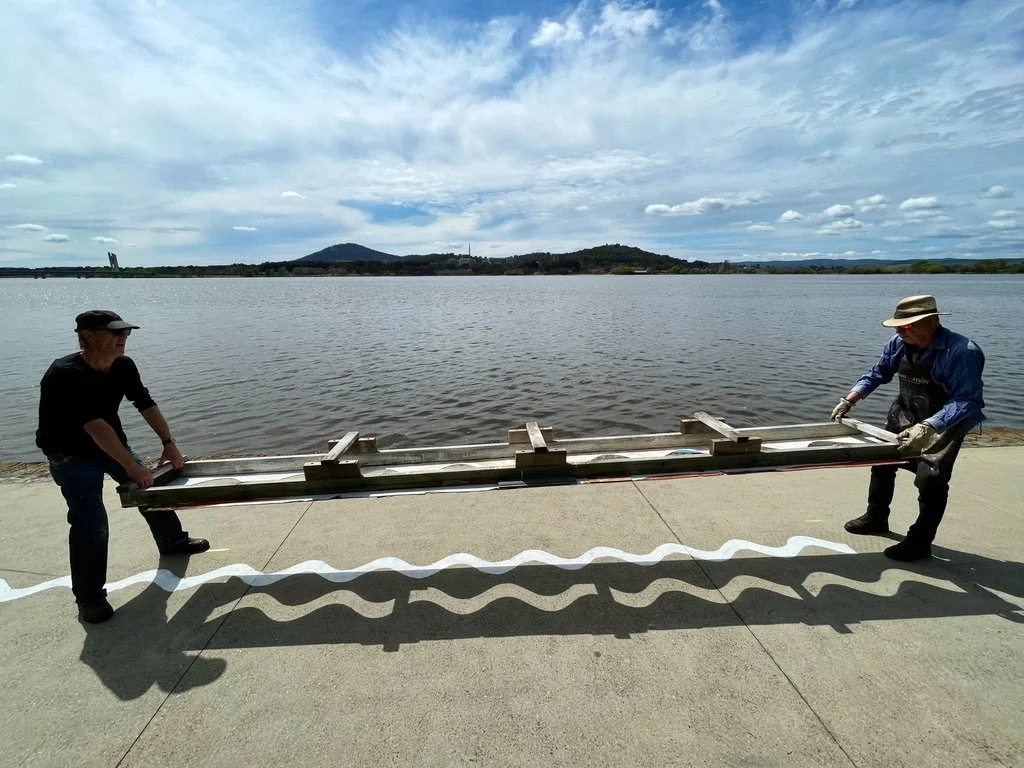
Installation.Photo: Mark Van Veen.
-
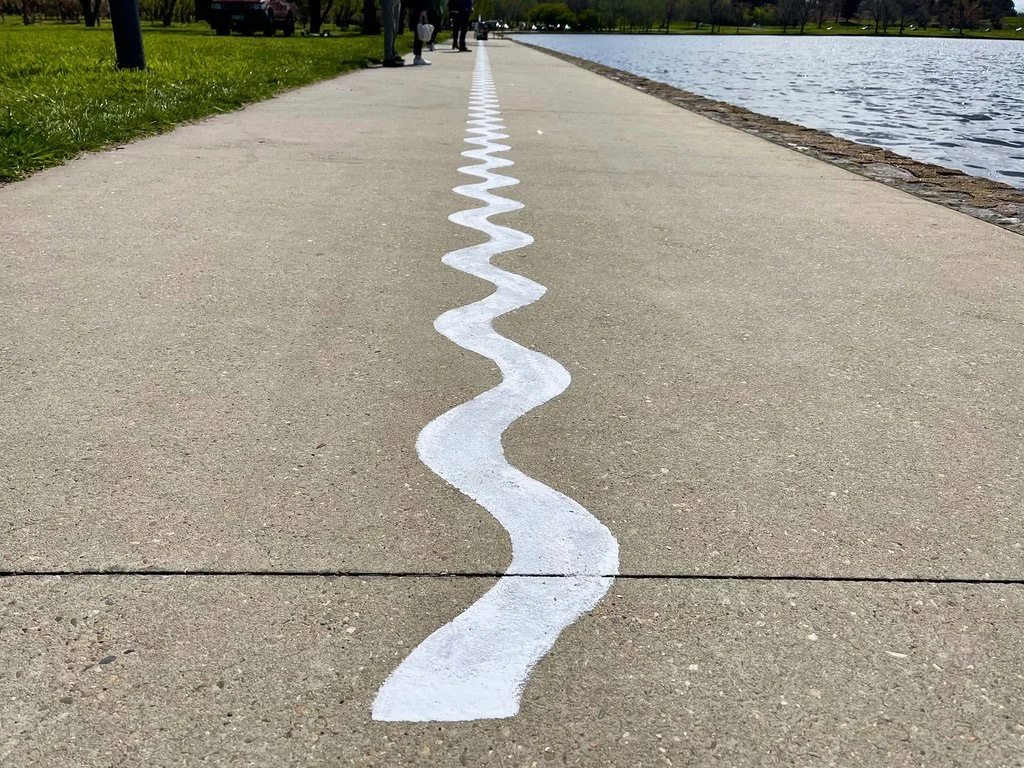
WAVE ACTION/Limestone Plane, 2022. Photo: Mark Van Veen.
Stencilled crushed limestone tempered with rabbit skin glue applied at 50 Celsius, sealed with 10% buffered formalin. 12.0 cm. x 55.6 metres.
The term ‘Limestone Plains’ designating the area around the ACT, was coined by Charles Throsby who built the first homestead on the southern tablelands in 1820. By 1833 limestone was quarried in Acton and Majura and fired in brick kilns to make lime for mortar.
This limestone was formed during the Silurian geological period 440 million year ago.
It contains fossiliferous sea life including corals which grew in mounds in the shallow seas covering Gondwana at this time.
Much of the surface limestone was subsumed by the development of Canberra’s city precinct, Lake Burley Griffin and suburbs. Many caves still exist below the city between 8 and 36 metres below the surface.
The wave form defining the limestone, is one of the geometric manifestations symbolising the earth Goddess Mara in Latvian Pre-Christian belief. The same form represents water for the local First Peoples.
-
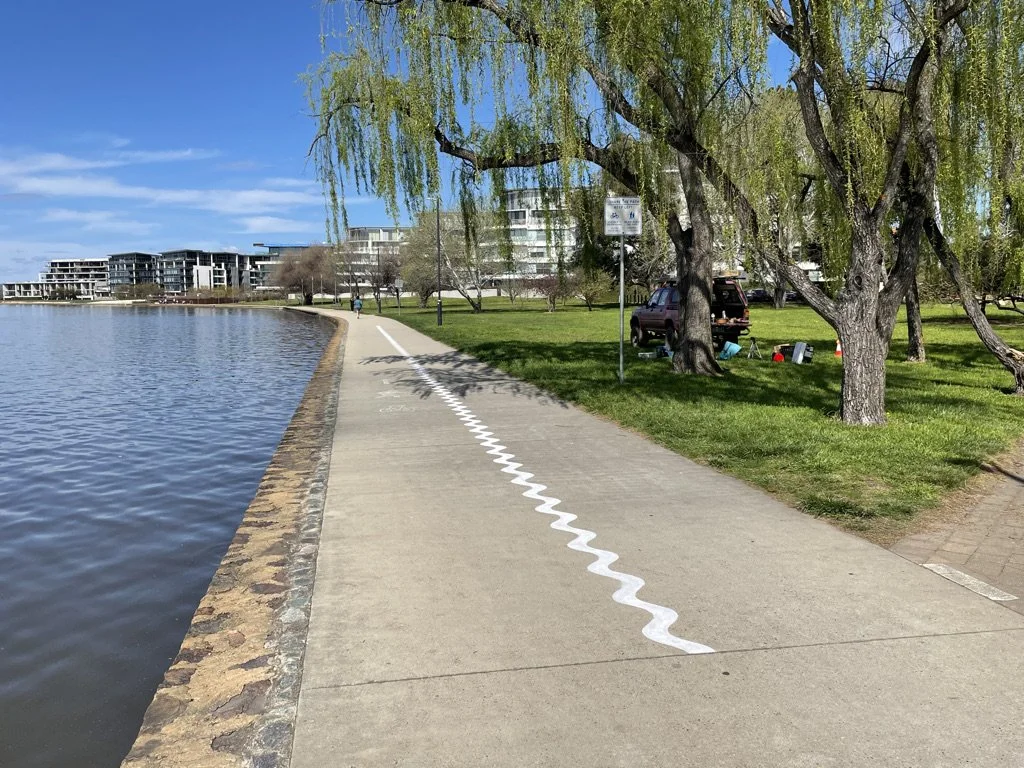
WAVE ACTION/Limestone Plane
-
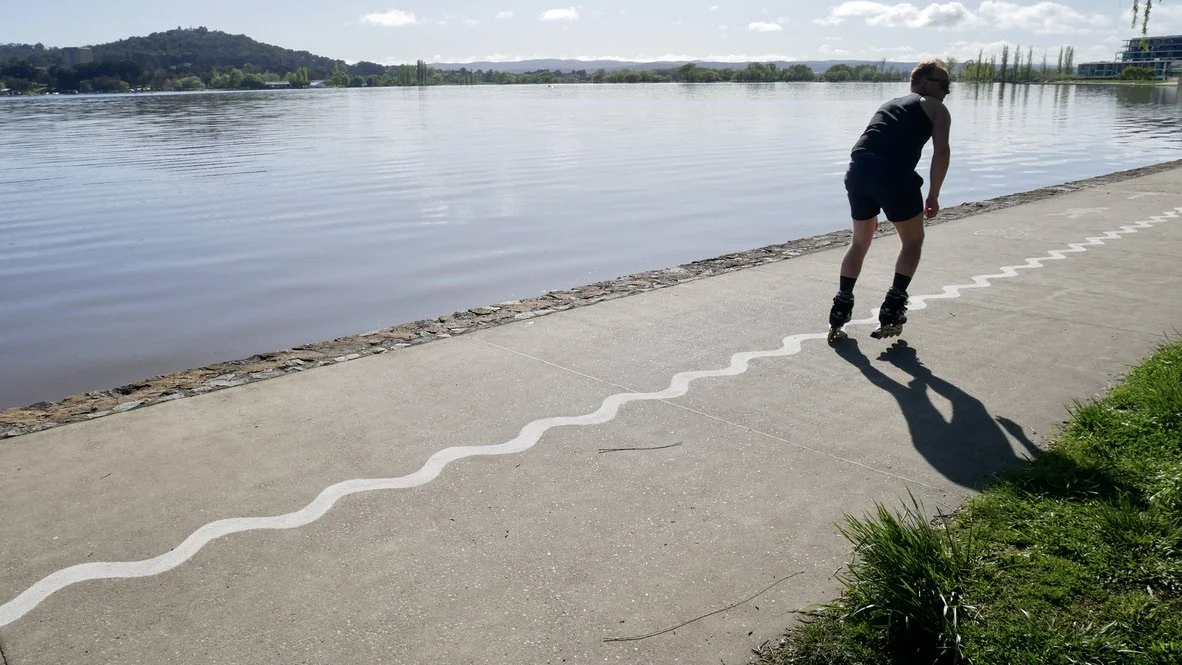
WAVE ACTION/Limestone Plane
-
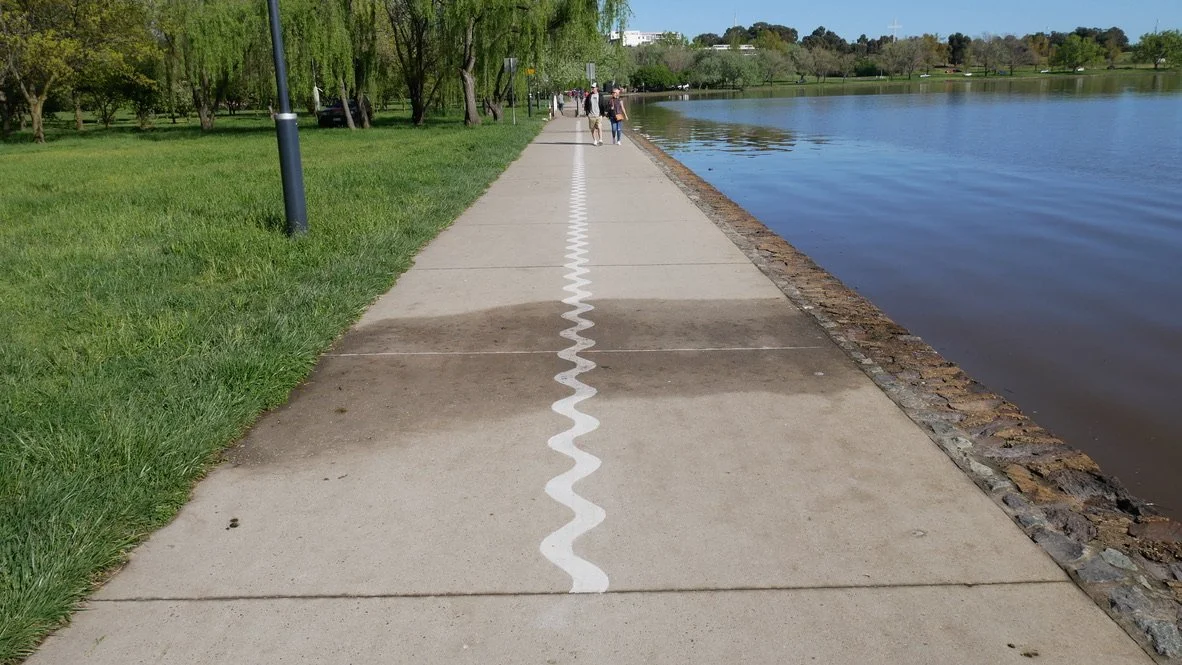
WAVE ACTION/Limestone Plane
-

WAVE ACTION/Limestone Plane
-
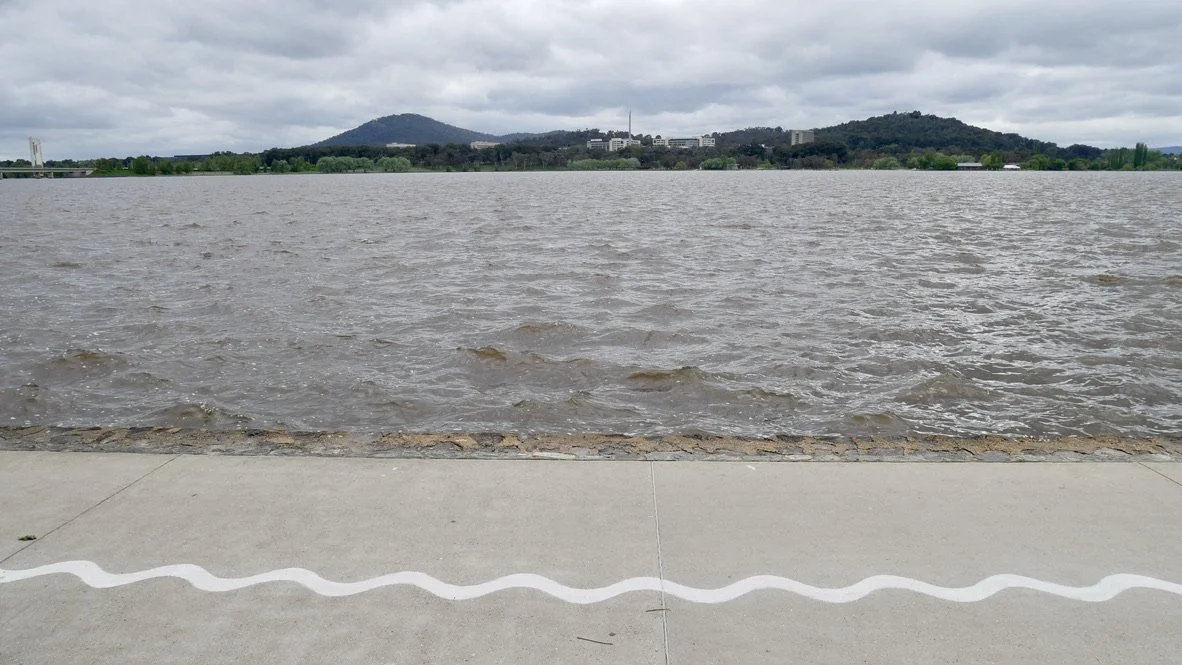
WAVE ACTION/Limestone Plane